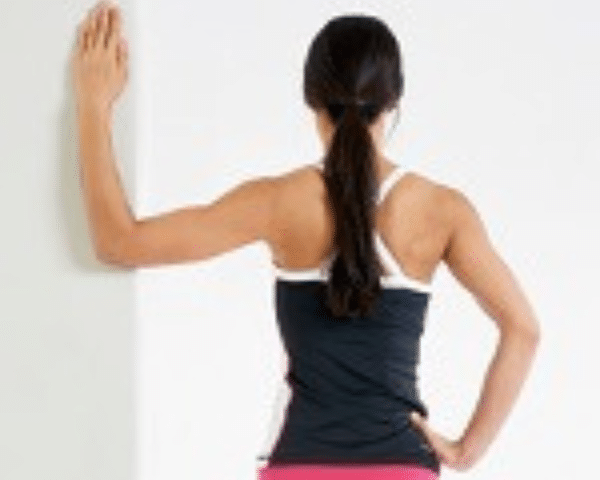
How often do you hear yourself saying ‘sit up straight’ or ‘stop slouching’. Increased screen use, rapid growth, carrying heavy school bags (what happened to lockers in school?), poor self-esteem and reduced sport participation can all lead to posture problems in teenagers.
If seeing your teen slumped over in bed on their laptop, hunched on the couch scrolling on their phone or leaning over their desk doing homework is a familiar sight – you are not alone!
What’s wrong with poor posture?

In these positions, your child’s head sits in front of their shoulders increasing the flexion in their neck and back. This puts pressure on the joints in the spine and leads to muscle tightness and weakness.
In good sitting posture their head sits on top of their shoulders, in a neutral position, feet are flat on the floor and the hips and knees are at 90deg. This maintains the natural curvatures of the spine and minimises pressure on the joints. It also means the larger muscles around the neck, shoulders and spine don’t need to work as hard.
Poor posture in teenagers is closely related to back and neck pain, headaches and poor self-esteem. While improving posture can lead to increased lung capacity, reduced stress, increased confidence and improved core strength and stability.

What can you do… realistically?
- Set up their workstation to optimise their posture as in the diagram. If your teen is spending long periods of time studying (or gaming) it is best for them to use a desktop computer or a separate keyboard with the laptop monitor at an appropriate height
- Put their backpack to the test. Check out the Australian Physiotherapy Associations recommendations at https://australian.physio/media/physio-recommendations-support-healthy-back-school-habits
- Lead by example. Laptops or tablets should only be used for short bursts, for you too! Set a timer, encourage lots of water (for an enforced toilet break), and coax them outside to choose what’s for dinner – whatever it takes!
- Switch it up by encouraging regular ‘Stretch and Move’ breaks – see below.
- Red dot rule. Place a red dot sticker on the fridge. Every time your teen goes to open the fridge door, they need to perform one of the stretches from the Stretch and Move break.
- Pilates. A 2022 study(1) evaluated the effects of a Pilates exercise program on spinal posture and hamstring length in adolescents with poor posture. The researchers found a significant improvement in posture and hamstring extensibility. The study of over 100 adolescents was a randomised control blinded design – meaning we can be confident in its results. (1)https://pmj.bmj.com/content/postgradmedj/early/2022/03/31/postgradmedj-2021-140901.full.pdf
Stretch and Move breaks
Doorway Stretch: Stand in line with your doorway. Put one arm on the door frame as pictured. Step forward until you feel a gentle stretch through the front of your chest. Hold for 10sec, step back, repeat 2x and then change arms and repeat. Try not to poke your head forward but keep it in line with your shoulders.

Chair Rotation Stretch: Sit side on your chair, feet flat on the floor. Sit up tall and twist towards the backrest of the chair. Use the backrest to pull yourself gently around till you feel a gentle stretch through your torso. Hold for 10sec repeat x2 in each direction.

Bridge: Lay on the carpet or a mat on the floor, and bend your knees so your feet are flat. Gently lift your hips off the floor pushing down through your feet and arms. Hold for 10sec then slowly relax to the floor. Repeat x3.

If you are concerned about your teens’ posture or they are complaining of back, neck pain or headaches they should be assessed by a physiotherapist.
Your physiotherapist will perform a full postural assessment and prescribe specific stretches and strength exercises for your child.
To book an appointment or learn more about our posture assessments or teen Pilates classes call Cathy or Alice at Just for Kids Physiotherapy at 9979 6609 or email justforkidsphysio@gmail.com




